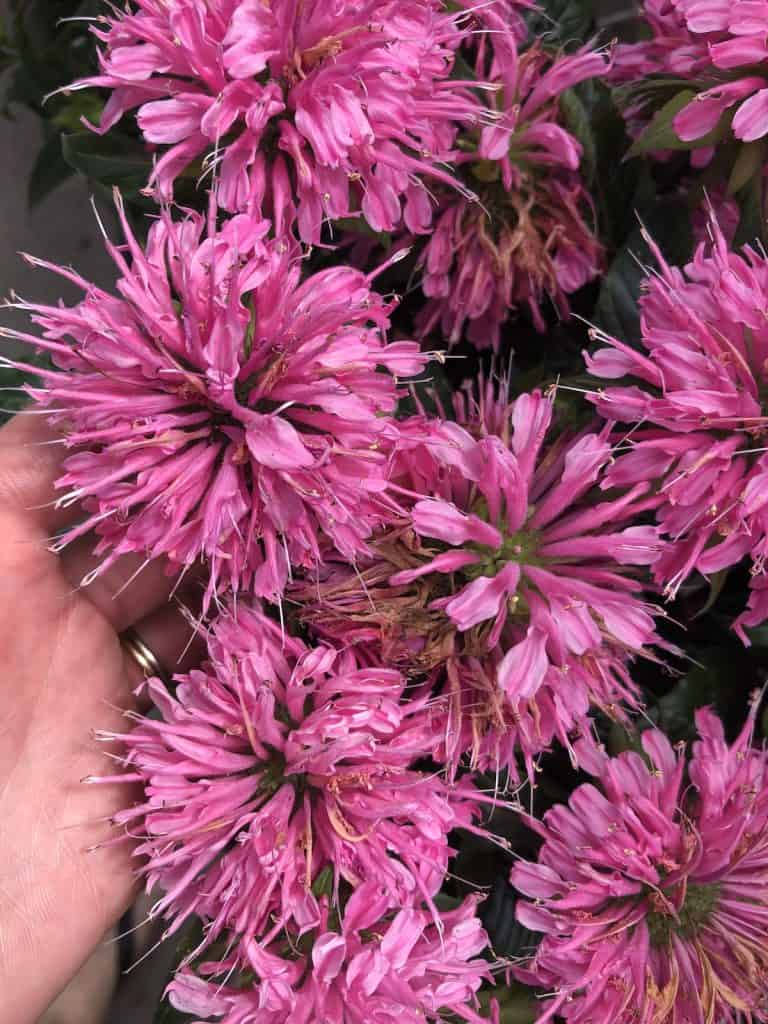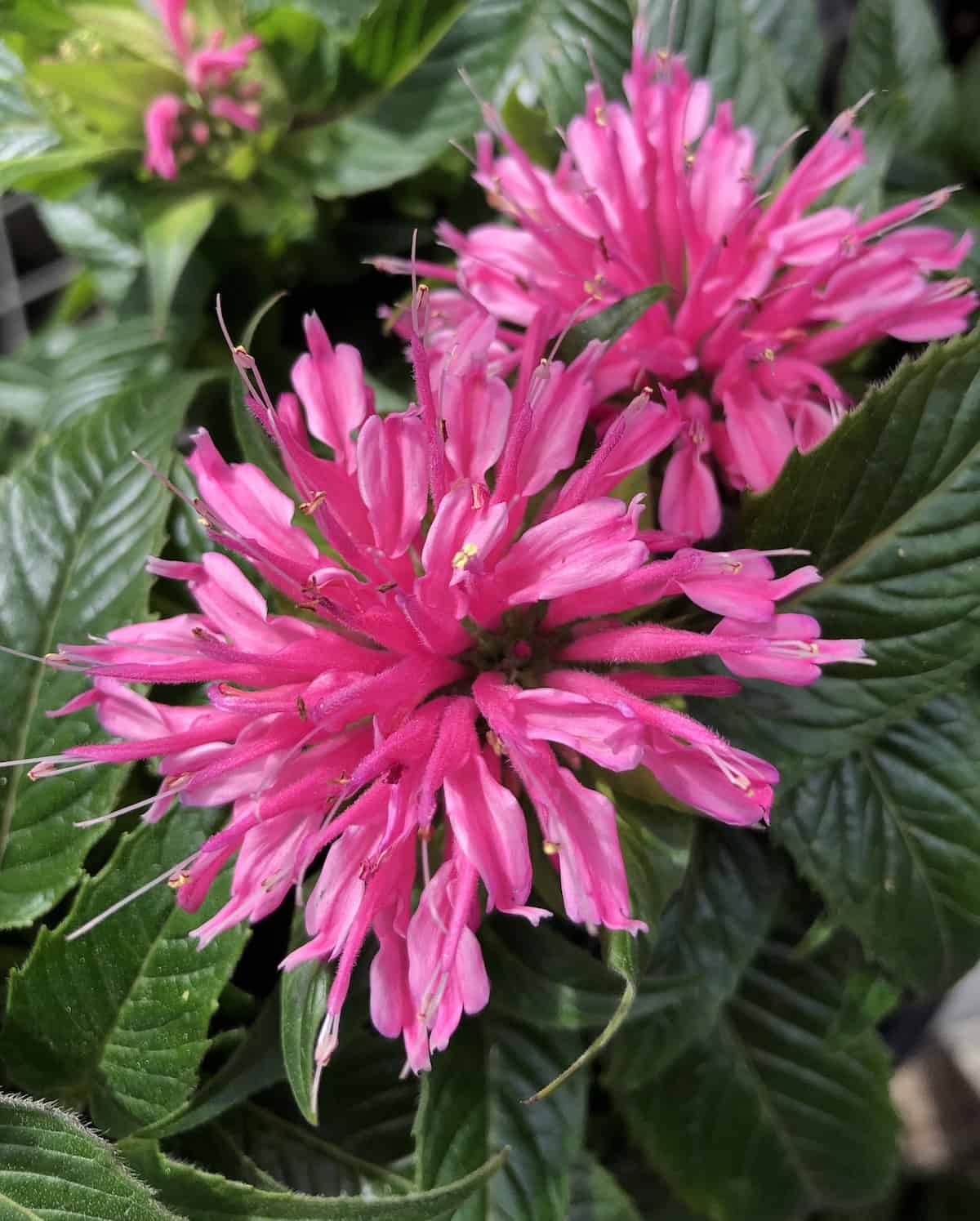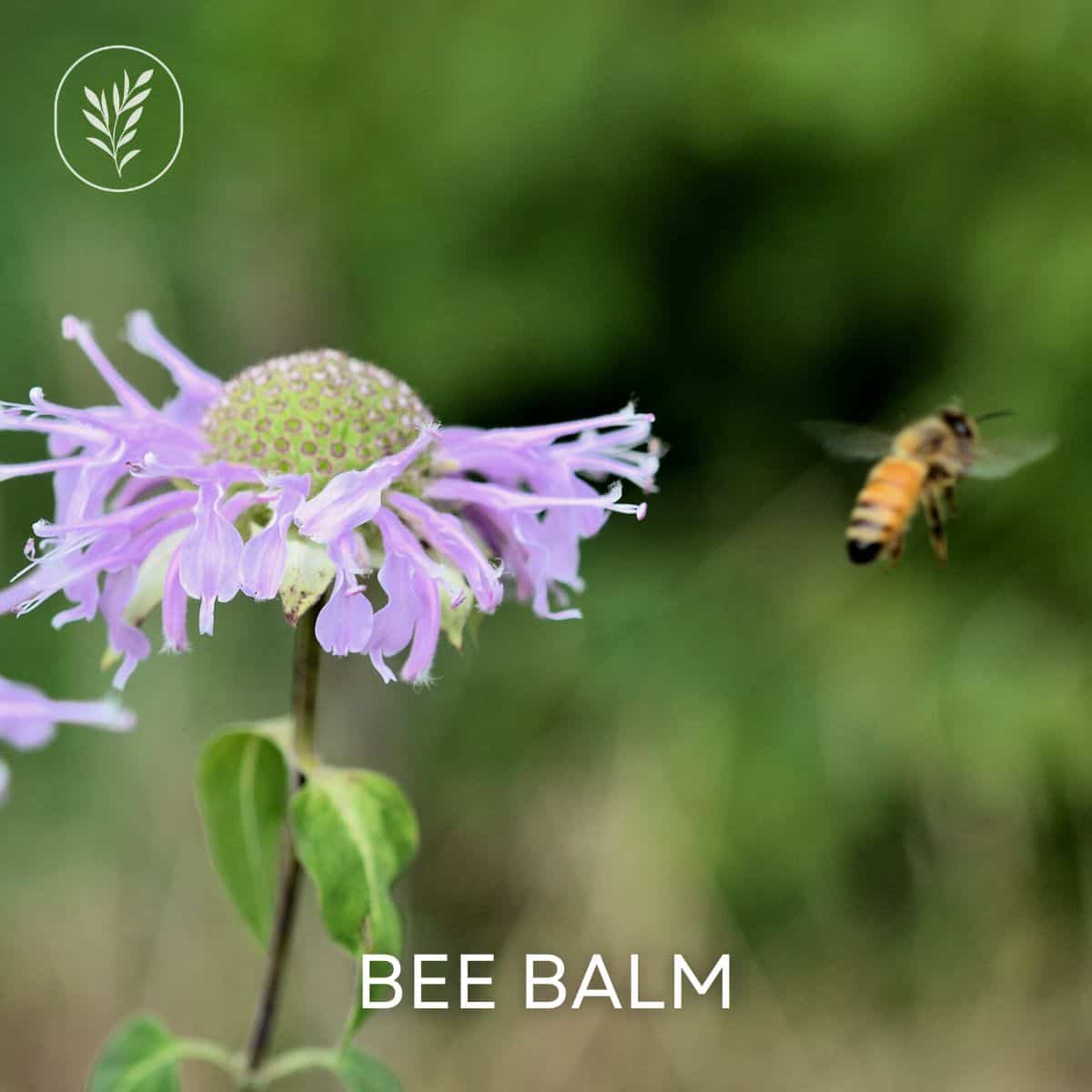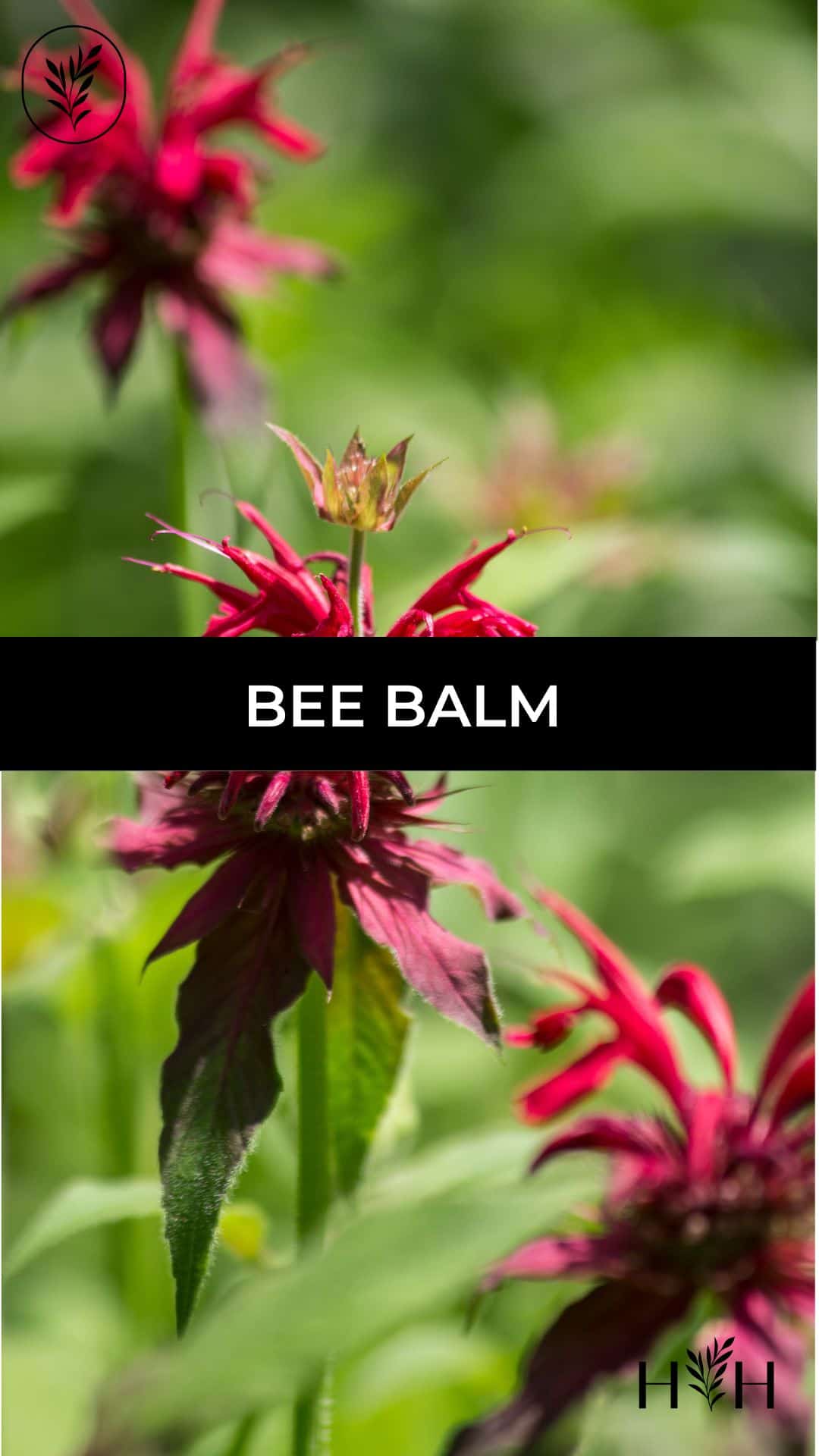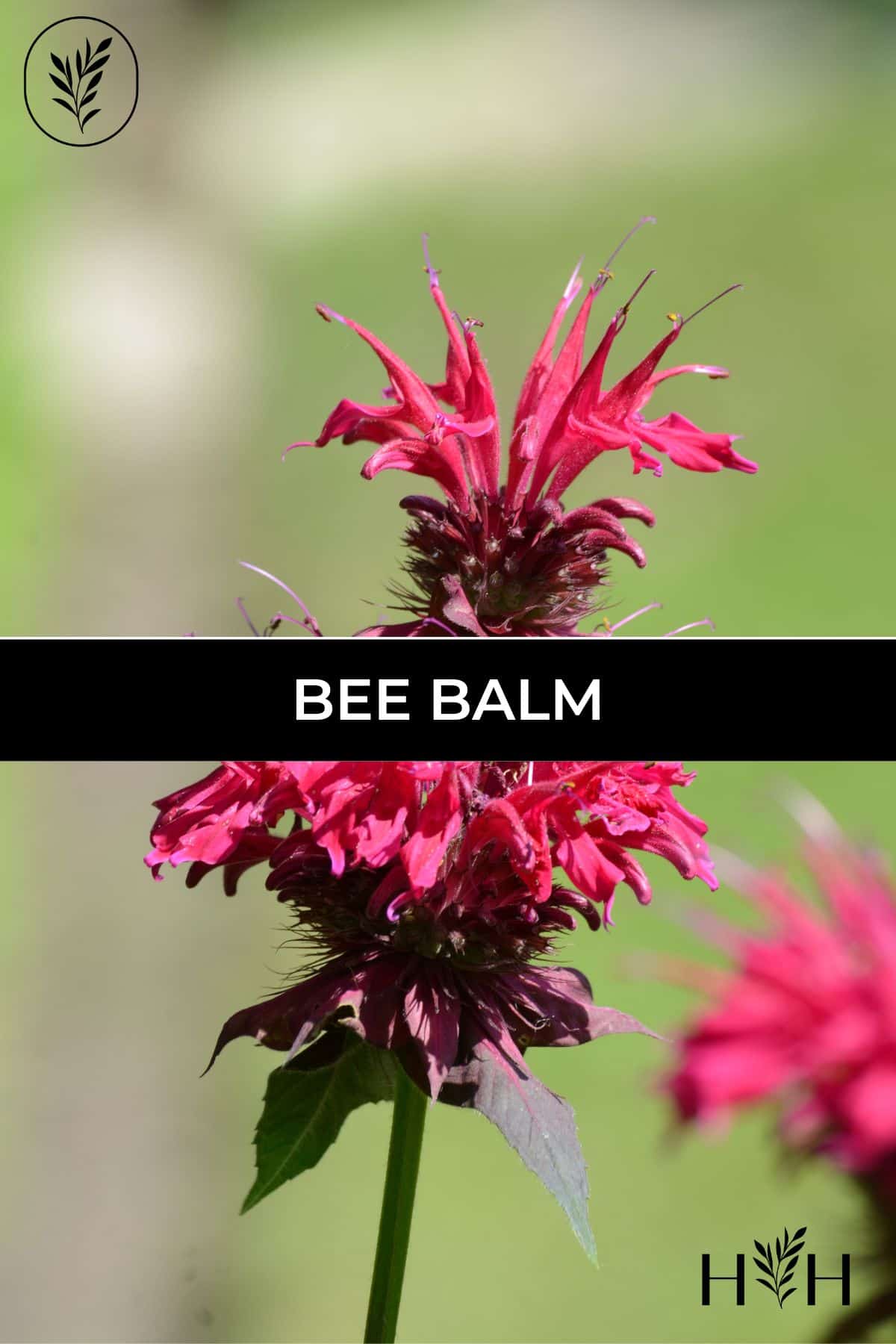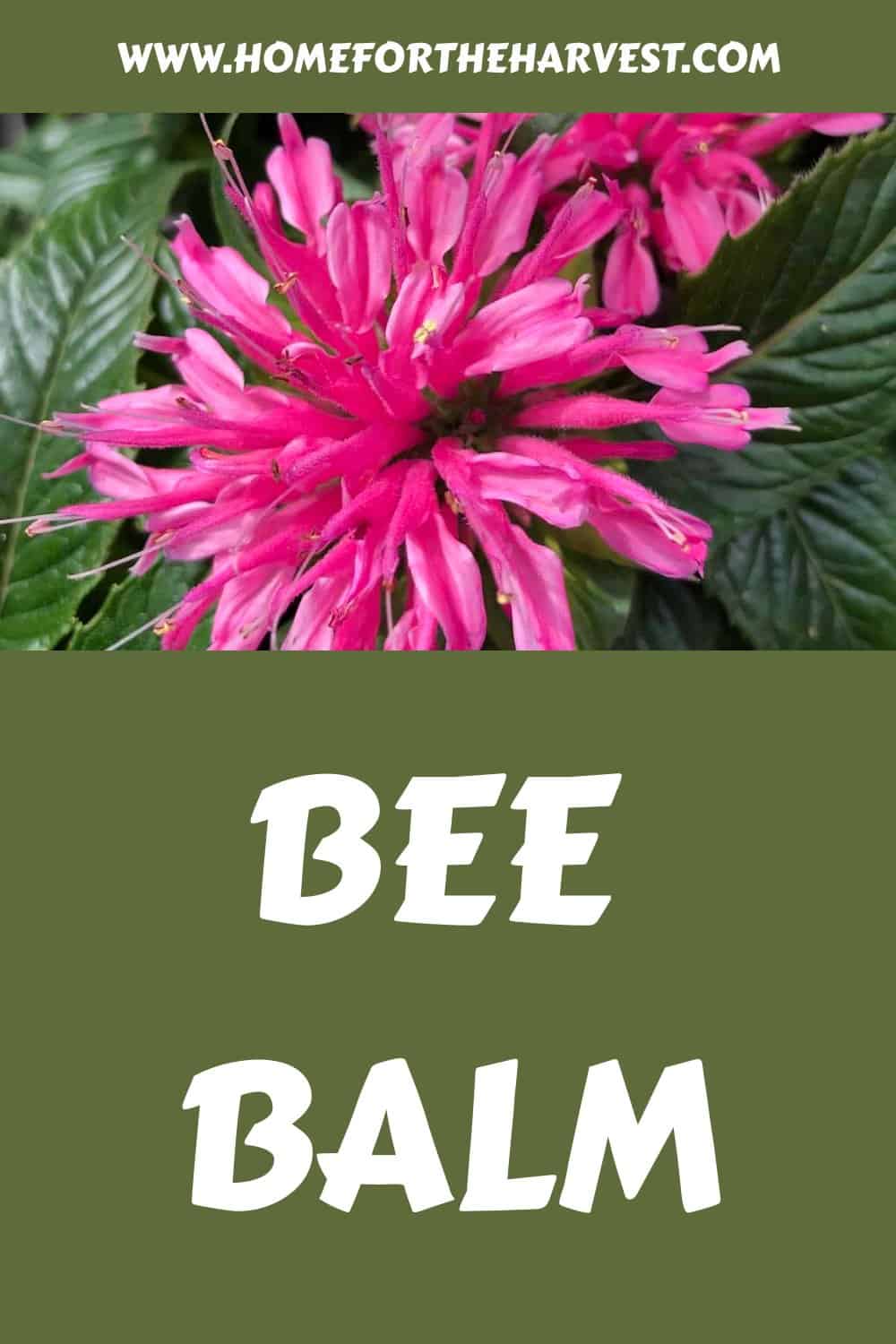Bee balm (Monarda) is a flowering perennial plant native to North America known for its ability to draw pollinators to the garden. The frilly flowers come in shades of pink, red, and purple, attracting a host of hummingbirds, butterflies, and of course, bees! Bee balm is commonly planted in perennial gardens, cottage borders, pollinator gardens, and wildlife gardens.

What is bee balm
Bee balm (Monarda) is a herbaceous perennial in the mint family with showy, cheery blooms in shades of pink, red, and purple. Native to the east coast of North America, this plant can be grown in zones 3-9. Bee balm is also called wild bergamot, Monarda, and Oswego tea. It’s one of the best perennial plants to attract bees, hummingbirds, and butterflies to the garden.
Bee balm basics
- Sunlight: Full sun
- Soil: Moist, well-draining
- Height: 1 to 4 feet tall
- Width: ~2 ft. wide clumps
- Attracts: bees, butterflies, hummingbirds
- Bloom Colour: red, pink, purple, or white
- Bloom Time: July-August
While bee balm plants do live for many years, they tend to thrive when divided into smaller pieces every few years.
“This charming member of the mint family bears shaggy-looking, 2- to 3- inch flowers in mostly warm shades atop tall, straight, square stems in summer. The deep green leaves are fragrant, releasing an aromatic, citrusy scent on hot days or when brushed against.”
Rodale’s Basic Organic Gardening: A Beginner’s Guide to Starting a Healthy Garden, by Deborah L. Martin
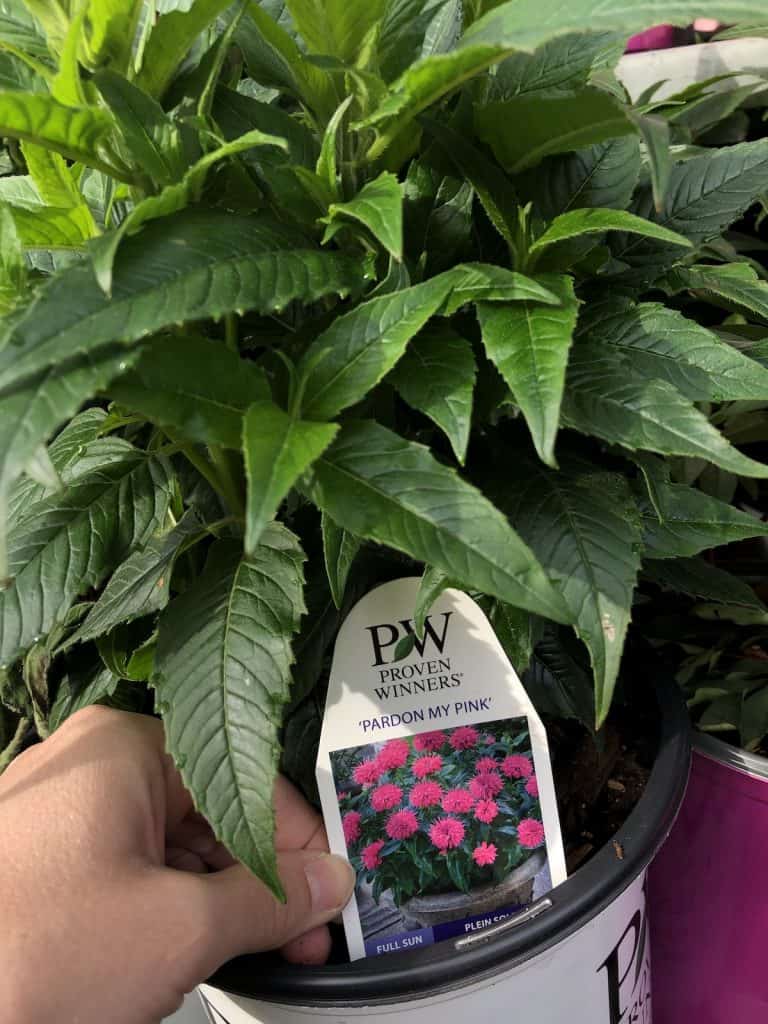
Common types of bee balm
Here are some lovely species of bee balm to consider growing in your garden:
- Scarlet Bee Balm (Monarda didyma)
- Wild Bergamot (Monarda fistulosa)
- Lemon Bee Balm (Monarda citriodora)
There are also named cultivars of bee balm from plant breeders, including favorites such as:
- Monarda ‘Balmy Purple’
- Monarda ‘Balmy Pink’
- Monarda ‘Petite Delight’
- Monarda ‘Jacob Cline’
- Monarda ‘Sugar Buzz’
- Monarda ‘Pardon my Pink’
- Monarda ‘Oudolf’s Charm’
- Monarda ‘Grand Marshall’
- Monarda ‘Marshall’s Delight’
- Monarda ‘Aquarius’
- Monarda ‘Croftway Pink’
- Monarda ‘Cambridge Scarlet’
- Monarda ‘Gardenview Scarlet’
- Monarda ‘Panorama’
- Monarda ‘Prairie Night’
- Monarda ‘Violet Queen’
- Monarda ‘Snow Queen’
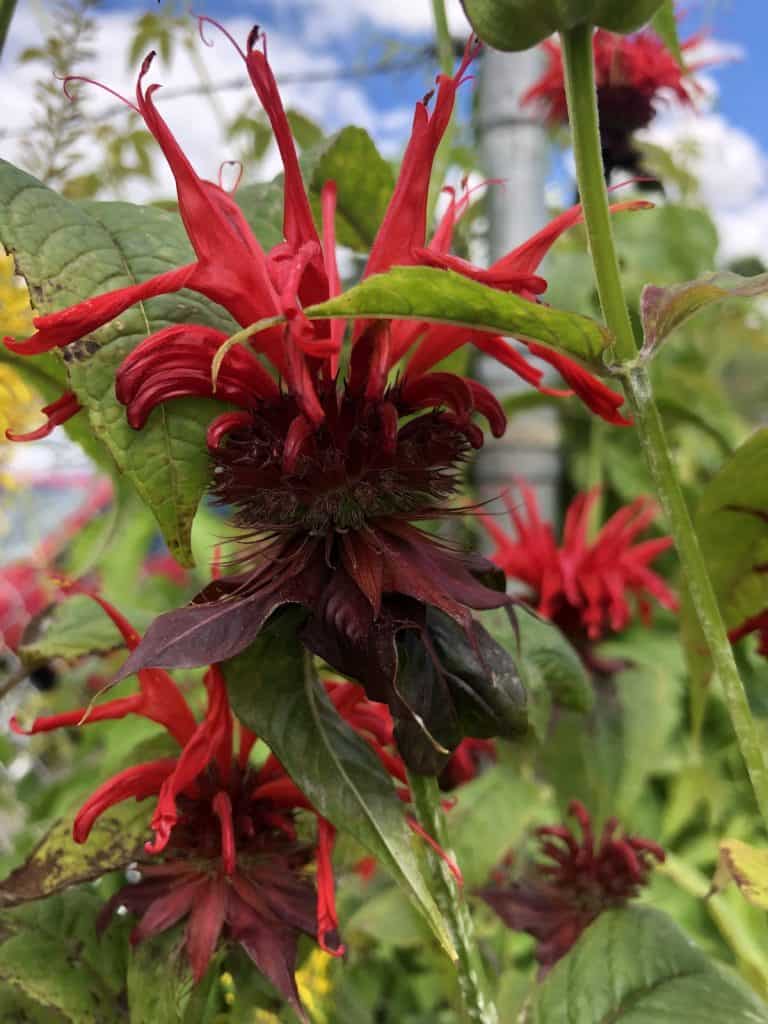
Buying bee balm
Bee balm plants can be grown from seed or purchased as potted plants. It is also common for gardeners to share “divisions” of bee balm when the plants are divided in spring or fall (generally every 2 or 3 years).
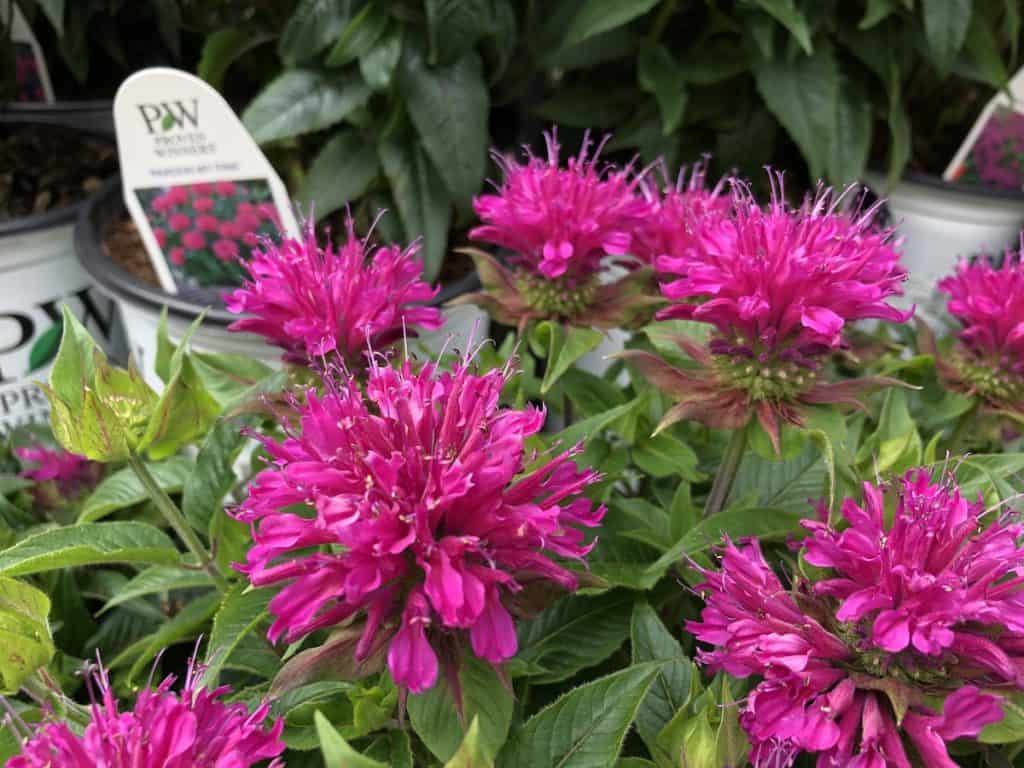
Planting bee balm
Planting bee balm starts with finding a location with full sun exposure (at least 6-8 hours of direct sun per day). Also, look for a spot with soil that drains well (no standing water – the roots need air), but be sure to have a hose or watering can for the plants handy as they do require watering in most garden settings.
Bee balm plants thrive in moist soil rich in organic matter. Bee balm does not have deep roots, however, and this plant can survive in as little as 6″ of soil in the garden. We have grown it successfully on the little strip of ground between the sidewalk and the asphalt of our street. Space the plants about 2 feet apart (and expect them to spread rather quickly). Water at planting and remember to keep the soil moist while the roots become established.
“The genus is named for Spanish medical botanist Nicholas de Monardes, author of a book titled Joyfull Newes out of the Newe Founde Worlde. Whether the news was “joyfull” or not depended on which side of the inequation – aboriginal or explorer – you were on; native peoples had found this herb long before Monardes arrived on the scene.”
Herbs: The Complete Gardener’s Guide, by Patrick Lima
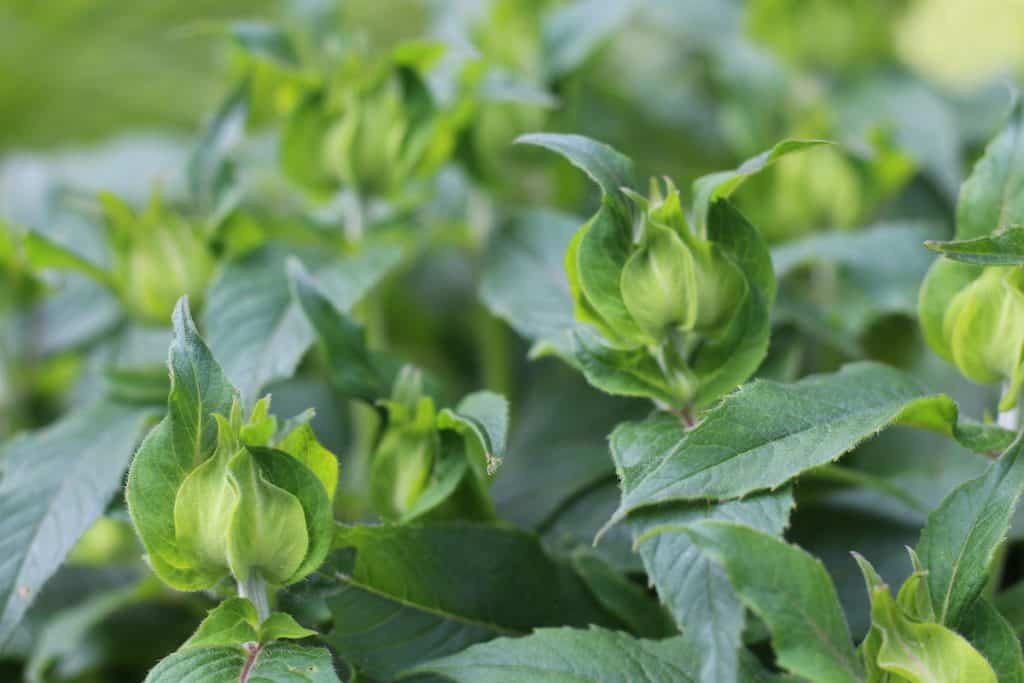
How to care for bee balm plants
Caring for bee balm starts with ensuring the leaves are receiving at least 6-8 hours of daily direct sunlight. While bee balm is somewhat drought-tolerant, take care to water the plants and keep the soil moist.
Bee balm tends to start flowering in late June or early July. The bloom starts with an initial flush of cheery flowers, followed by intermittent blooming throughout the season. Deadheading (removing spent flowers) in mid-summer can help keep the plant blooming into late summer.
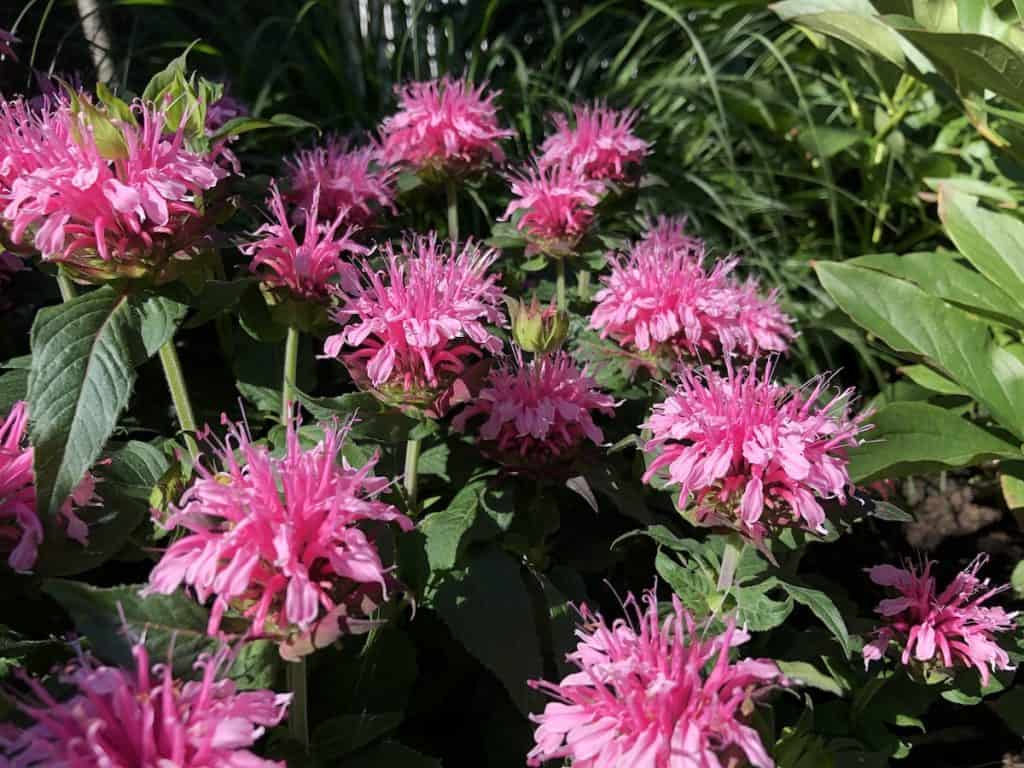
Bee balm plants have a clumping habit (a welcome trait for a member of the oft-enthusiastic mint family). It can become somewhat invasive in truly optimal conditions, but is not generally considered as such, and is a native plant to the USA. Dividing healthy plants every 2 or 3 years helps to keep the clumps dense and discourages them from spreading outside their spot in the garden.
“After a few years, the flowers degenerate. Then you should dig them up and divide them: throw the old center of the clump away and retain the outer parts for replanting.”
Planting the Natural Garden, by Piet Oudolf and Henk Gerritsen
The leaves of bee balm can be hit with powdery mildew, especially in damp climates or wet years. This condition appears as a grey/white coating on the leaves (it really does look like “powdery mildew”). Cut off stems with this condition and discard them. Bee balm plants are hardy and will generally pop right back given they are well enough established and otherwise healthy.
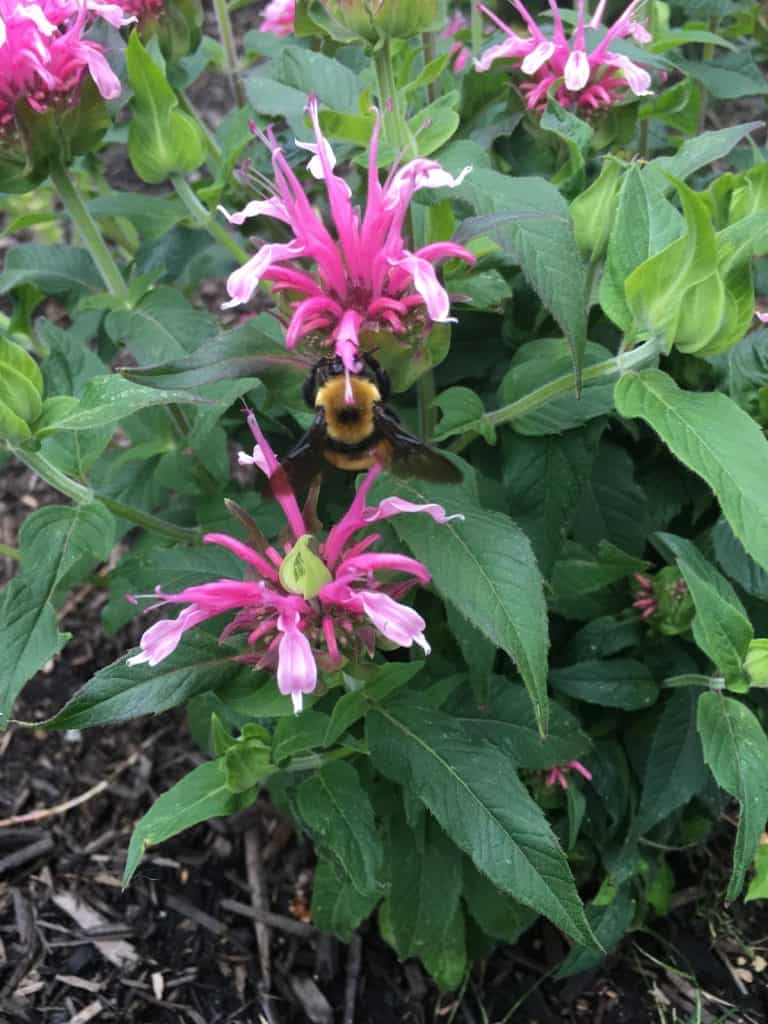
Care questions about bee balm
Where does bee balm grow best? Bee balm grows best in sunny areas with moist soil. Native to the savanna and woodlands of eastern North America (partially-treed areas), this perennial is both shade-resistant and drought-resistant, but really does flower best when grown in full sun and moist soil.
Does bee balm need full sun? Bee balm does not need full sun to survive, but it needs full sun to flower at its best. With at least 6-8 hours of daily direct sunlight, this plant will be covered in flowers come July. The plant uses energy from sunlight to create “food” energy for cell division/plant growth. Plants grown in partial shade tend to be leggy and have few blooms.
Does bee balm only bloom once? Bee balm is a re-blooming perennial, meaning that it will produce new flower buds and blooms throughout the summer. Deadheading dying flowers from the initial flush of early-summer blooms will encourage the plant to grow more flowers in the following weeks.
Do you need to deadhead bee balm? You don’t need to deadhead bee balm. Deadheading the first flush of blooms in summer can help the plant grow additional blooms later on in the summertime. Later blooms, however, are often left standing in the fall to provide food for birds, a habitat for beneficial creatures, and visual interest in the winter garden.
Should I cut back the bee balm in the fall? Bee balm does not generally need to be cut back in the fall. The seed heads produced by after the flowers fade provide winter interest in the garden (not to mention seeds for the birds). Bee balm can be cut back in late winter or early spring after the snow has melted (in snowy climates). That being said, any leaves that are showing signs of disease should be removed as soon as they are observed (at any time during the growing season.
How do you propagate bee balm? Bee balm is most easily propagated by division. The whole plant can be dug up and split into smaller sections. An established plant can often be established into a half-dozen sections which each fill a nursery-sized plant pot. Bee balm can also be grown directly from seed.
“Bee balm is lovely in a cottage or wildflower garden. The leaves and flowers are edible (when grown organically) and can be added to salads. You can also dry the leaves and use them to make tea.”
Rodale’s Basic Organic Gardening: A Beginner’s Guide to Starting a Healthy Garden, by Deborah L. Martin
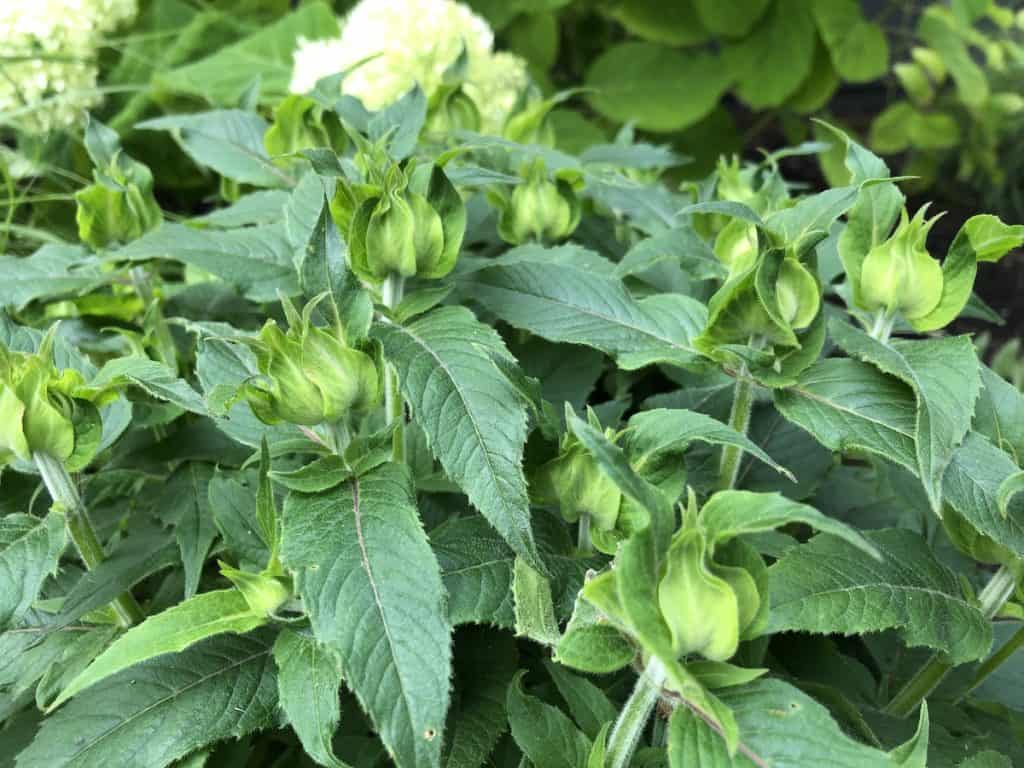
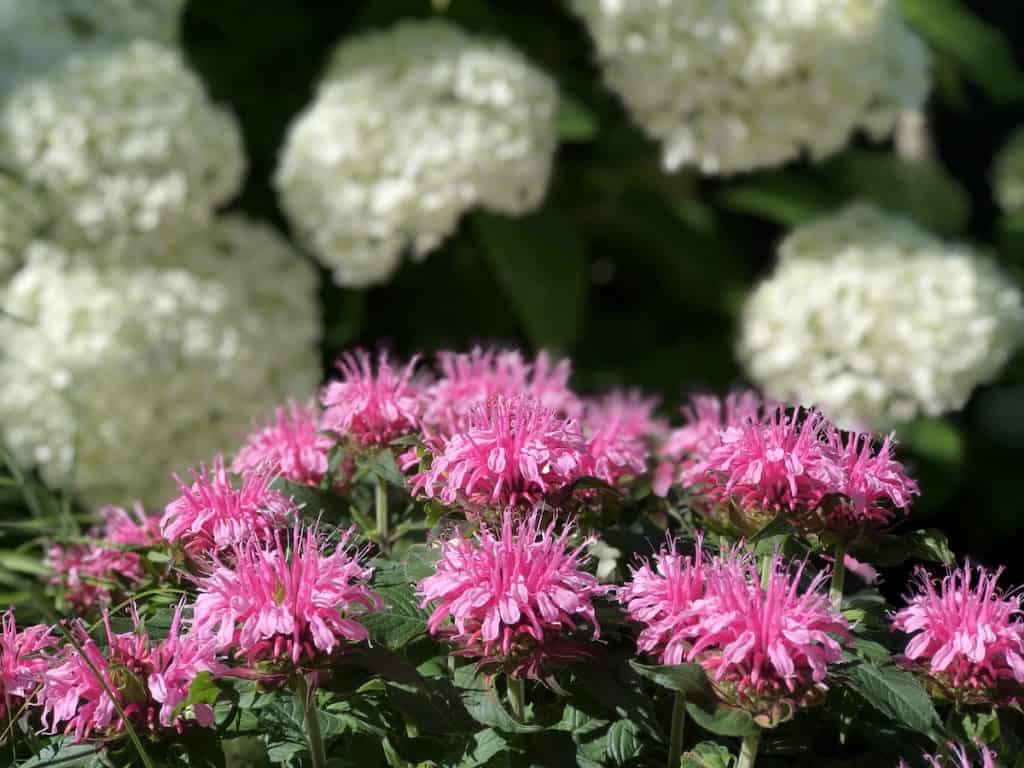
Companion plants for bee balm
Fortunately, there are many companion plants that grow well with bee balm. Here are some examples:
- Hydrangea (such as Incrediball or Little Lime)
- Delphinium
- Blueberry
- Milkweed
- Hardy Hibiscus
- Columbine
- Coral Honeysuckle
- Foxglove
- Lobelia
- Violet
- Veronica
- New England Aster
More Ideas: 24 Native Plants for Backyard Birds
“One of the most decorative of the tea herbs, bergamot is often grown strictly as an ornamental for its gorgeous colors.”
Herbs: The Complete Gardener’s Guide, by Patrick Lima
